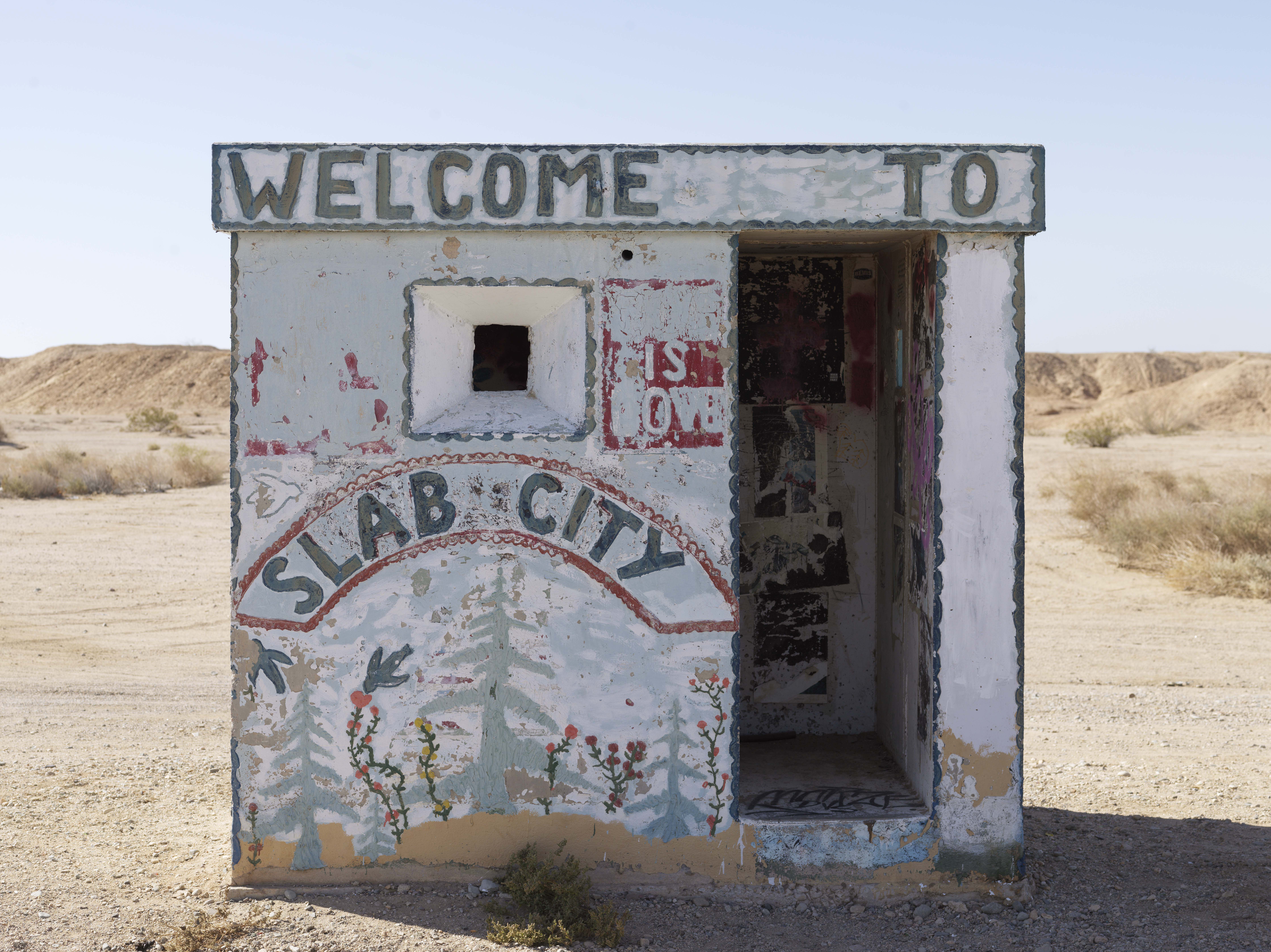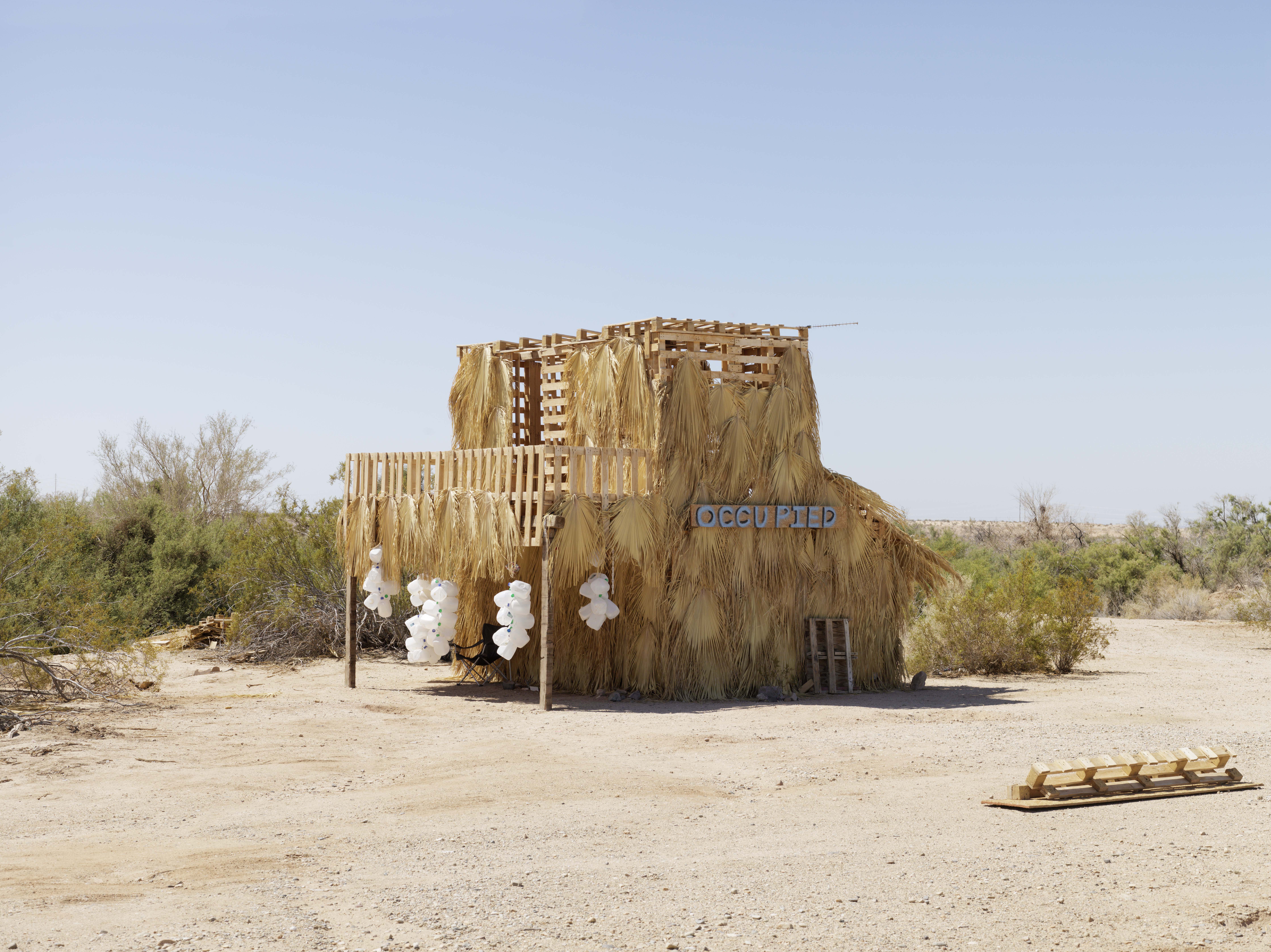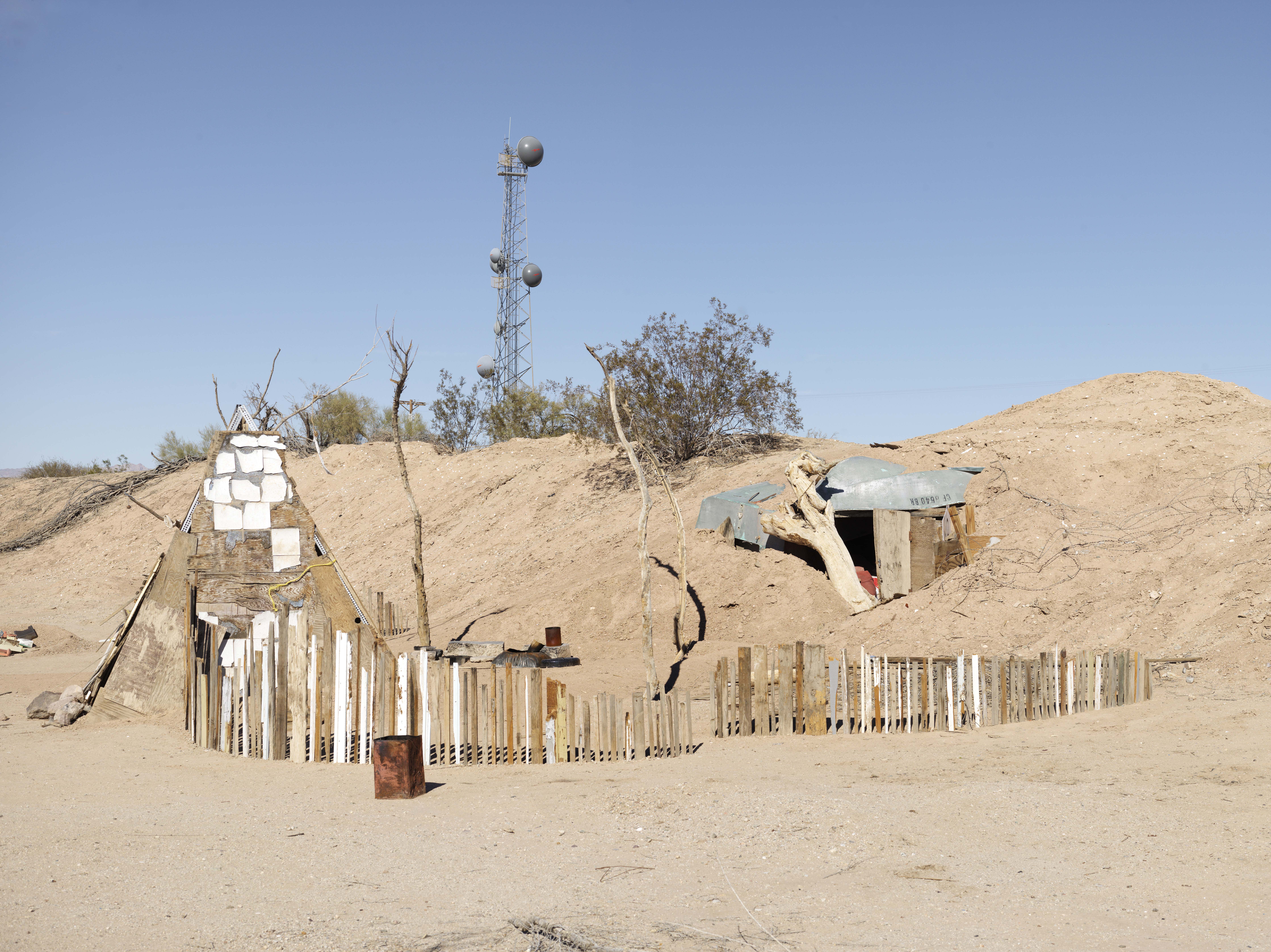
CAMPS: An Interview With Charles Hailey
Charlie Hailey is an architect, writer, and professor in the School of Architecture at the University of Florida. Recently awarded a Guggenheim Fellowship, he is the author of five books, including Camps: A Guide to 21st Century Space and Slab City: Dispatches from the Last Free Place (with Donovan Wiley).
Michael Waldrep, Studio Olafur Eliasson, is a filmmaker, photographer, and researcher focused on architecture and city planning. He was previously a staff member at Urban-Think Tank, where he amongst others contributed to this magazine.
IN this exclusive interview, Charlie Hailey suggests that camps are unique in registering the struggles, emergencies, and possibilities of global existence. Hailey explores how all camp spaces, whether used for Scout adventures, or to house Guantánamo detainees, are ultimately informed by politics. Transforming the ways in which we perceive and construct built environments, Hailey suggests that camps are unique in registering the struggles, emergencies, and possibilities of global existence.
MW: What is the main benefit of cataloguing camps? At first glance, a protest encampment in Texas, a gathering of computer programmers at Foo Camp, and the semi-permanent homes of refugees seem strange bedfellows.
CH: Whether we think of the camp as a type of space, or as a temporally charged situation, it indicates current forces and contemporary circumstances. In each of their permutations, camps accommodate conditions that might otherwise remain without space. And perhaps most importantly they indicate change—whether local or global—at its earliest stages. Documenting the full range of camps offers insight into these prescient spaces, and there are particular overlaps that suggest potentially valuable patterns. For instance, after Hurricane Katrina in 2005, a group of participants from the Burning Man festival reconstituted their theme camp as a relief camp in southern Mississippi. ‘Burners Without Borders’ continues to this day as an organization combining international disaster relief and community initiatives. This ‘meme camp’[1] acts as a bridge between the autonomous camps of Burning Man and camps necessitated by natural disaster. The resulting camp becomes a kind of genetic code for relief efforts.

MW: Your book Camps: A Guide to 21st Century Space, came out in 2009. Have you noticed any new typologies emerge in the period since? While it is clear, for instance, that refugee flows into and across Europe are nothing new, the engagement of the European activist Left in the building of camps in Calais or Lesbos arguably is. Do you see this as a new form of cross-pollination between informal transit camps and activist encampments? Are there others?
CH: You are right—The Jungle’s ‘Good Chance Theater’ is an example where a camp accommodates the performative within situations of necessity and control. It is not unlike the Burners Without Borders relief camps, and I’m not sure the cross-pollination is new, so much as it is more systemic now. The increasing visibility of such camps means that they become references for approaching global displacement generally, and for trying to understand migrant experiences specifically, whether they have a stage or not. The Calais camps also attracted attention from other activist sources like Verso, which donated print media to the camp library ‘Jungle Books’. Their agility will allow these resources to follow the camp’s dispersed population after the Fall 2016 evictions. This kind of mobilization also increases the possibility for typological hybrids. Looking back, another thing that strikes me is that the publication of Camps came before the emergence of the Occupy Wall Street movement, although some of the classifications I used in the book anticipated Occupy’s use of the camp. These protest camps were meme camps in their repeatability, peace camps in their activism, anarchist camps in their process, festival camps in their spirit, and even Forward Operating Site (FOS) camps in their strategic positioning in a theatre of military operations—recalling how Occupy DC placed itself along the lobbyist corridor of K Street NW in Washington. And I cannot help but think about the future role of other quasi-public spaces as sites of resistance now that we are seeing media, tourists, and others camping out in the atrium of Trump Tower in New York, where privately-owned public spaces were originally negotiated with the city to allow for increases in the building’s height.
MW: How crucial is the dimension of control—what you refer to in your book as the divisions between camps of autonomy, control, and necessity? And what are the subsequent impacts on camp architecture and space?
CH: The categories of autonomy, necessity, and control grew out of the diverse objectives I found in the range of camps I looked at. They served as starting points—that is, thresholds into the spaces and processes of camps—and were not intended to impose boundaries or divisions. In many cases, the edges between each category are quite porous, so control is actually present in all three categories. To put it another way, no condition is without conditions. A place like Slab City in Southern California might corroborate, on the surface, its designation as ‘the last free place’. But we must ask, free from what? And how free in the end? These are questions to consider in terms of both degree and kind.

MW: Could you expand on this idea? Is there something special in the case of Slab City in the way it has developed (literally) on the foundations of a military installation? Are there lessons to be learned in the Alejandro Aravena mode of public provision of ‘half a house’, which is later built out?
CH: Slab City occupies the grounds of a World War II training camp on state-owned land in California’s Imperial County. Leftover from the military installation, the eponymous slabs bring order to the harsh and indeterminate desert landscape. Materially, they do offer for building sometimes elaborate, though still ephemeral, shelters. Socially and spatially, they generate differences among those who live there, creating hierarchies of land tenure—those who live on slabs, on graded sand and gravel, or within more marginal, less cultivated desert scrub. ‘Freedom’ at Slab City resonates with legacies of manifest destiny, but now within an internalized frontier. The slabs carve out spaces of adaptation and resistance, not only from the desert expanse, but also from the promises (some of them failed) of freedom. To that end, the infrastructure of Slab City is not just the physical provision of concrete on sand. It is also more widely drawn. It is the national land ordinance system that allotted section 36 of each township to state boards of education as “free public space for common schools”. Most other states sold off these land holdings years ago, but California’s section 36 land has remained. It is the underlayment of soils that are not quite viable for the agricultural production that occurs a few miles west in Imperial Valley’s industrial agriculture system. It is the availability of pallets and cardboard material leftover from the burgeoning solar farm developments on nearby land. Alongside many others, these sometimes invisible systems of land use, topography, and economic flows make up the matrix of the camp. With such systems at work, we see translations between camping types, and Slab City’s autonomous settlement grows within the military camp’s legacies and residues of control. In an inverse but related adaptation, the British Royal Navy converted Sir William Butlin’s holiday camps into highly controlled training camps during World War II. When the war ended, holiday goers and tourists returned. Only camps accommodate such space.
MW: The artist-managers of Burning Man have little in common with refugee camp administrators, except perhaps that neither are usually trained architects. What can architectural training bring to bear in the design of camps?
CH: That is a great question, and one that comes up a lot. We often hear that architects are great problem solvers, but I think architects are actually particularly skilled at framing problems. And, in a broad range of situations, that is a specific area where we as architects can contribute to the discussion of camps. Problem setting requires one to be attuned to complex systems and relations—between scalar shifts, within communication systems, among resources and distribution, and with infrastructure and dwelling. Architects can bring ideas for connecting logistics with experience. Ostensibly, architects know how to build buildings, but in camps it is the relations between things that make the place. I have always been interested in things in the making. I also remain concerned with the tension between detail and territory. Camps are inherently about relations between things, and between people and things, setting in motion dynamic interactions. For example, this might be the anchorage of a tent peg relative to the soil conditions of the overall site and wind speeds. Or it could be the availability of wood for cooking fires in a refugee camp. In some cases, refugees living in camps must travel as far as a 30-kilometer round trip to collect firewood in a rapidly degrading and dangerous landscape. The planning of camps must take into account the context of camps, their total environment, as well as the entire range of scales.

MW: What can architects and designers take from Camps? If there are lessons to be learned from a comparison of the diverse range of camp typologies, are there lessons that can be applied to more permanent forms of architecture?
CH: The Dutch Situationist, Constant Nieuwenhuys, once said that a camping area is a form, however primitive, of a city. Although not yet cities, camps should be considered nascent urban forms. They are settlements that have been decreed temporary, but made permanent by necessity. Camps make present future trajectories of migration, trace invisible flows of capital, make room for aspirations of shifting demographics, and demonstrate essential definitions of dwelling itself. As camps anticipate change, their adaptability is agility in movement and ideology. Camps accommodate the nomadic, while also embracing foundational and elemental aspects of shelter.
MW: In your research, what are the major differences that you have noted between cities that began as camps and those that were the product of urban design?
CH: This reminds me of two different examples. The passage from camp to city is sometimes a process of accretion and crystallization of the temporary—much of which might be user-created and vernacular in origin—into something more permanent. I am thinking of Michel Butor’s reading of Mediterranean development, particularly Istanbul, where fabric canopies became more solid roofs, and horizontal density grew vertically. The planning of camps begins quite differently. When I talked with the architect involved in designing Hagadera refugee camp at Dadaab in north-eastern Kenya, he was surprised to see that the camp’s layout—conceived in 1992—was very much the same more than 20 years later. He also noted how the urgency of the camp’s formation did not allow for site-specific design. In 1992, with the rapid increase of displaced populations from Somalia, there was only one month from schematic development until the arrival of refugees. An imposed infrastructure was filled and plugged into.
MW: Do you believe that the relevance of the research presented in Camps has grown in the face of increased migration and the heightened international focus on a so-called refugee crisis?
CH: In my first book, I proposed camps as a field of study, and camps continue to be witnesses to conflicted histories and complicated aspirations. Over the past six or seven years, the number of forcibly displaced persons has increased by 20 million. Despite growing numbers and increasing displacement, camps are still considered temporary. In his book City of Thorns, Ben Rawlence talks about the construction of Dadaab’s new camp, Ifo 2[2]. When they toured the site late in 2010, as it was still being developed. However, Kenyan officials stopped the construction of shelters made from Interlocking Stabilised Soil Block (ISSB) because they were considered too permanent, too much like houses. It is critical to think about camps not as ends in themselves, but as a part of an extended field that includes existing urban environments, longer-term communities, and sustained livelihood. Since 2009, in other circumstances, camps have also continued to offer sites for inquiry as well as resistance. Occupy Wall Street was a target criticism for its lack of clear objectives, but I have argued that the camps the movement spawned were the goal all along. They offered visualizations of a message, also serving as scenes of disclosure to reveal a process of achieving democratic consensus. And the offshoot Occupy Our Homes successfully drew attention to the foreclosure crisis in the United States, which might have otherwise remained an abstraction to those who were not affected across the country. In thousands of yards, these camps made visible the mechanism that caused the problem, occupying the broken relation itself – the space that should belong to the homeowner, but was instead the space of the bank. They occupied the vacuum left by eviction.
MW: Are there particular challenges that arise at the stage at which camps, especially those you term ‘Necessity Camps’, concretize into more permanent settlements?
CH: I think the relativism of those terms does not really apply to camps. Instead, we find each within the other — paradoxical situations like chronic mobility and transient fixity. In practice, camps of necessity endure. The Kenyan government has announced plans to close the five refugee camps that comprise Dadaab, but the complex was established in 1991, and its camps accommodate a generation that has really only known this one environment. After Hurricane Charley, the post-disaster camp dubbed ‘FEMA City’ stayed in place for nearly three years. That is, twice the amount of time FEMA allots for emergency shelter. In this case, ironies of mobility and intransience are also at play. It is illegal to tow a FEMA-issued trailer. Camps must respond to displacement with longer-term visions. I agree with Alejandro Aravena’s argument that tents in refugee camps are “money that melts”[3] He suggests that more durable solutions, like incremental housing, are “payments in advance”. Camps should not be protracted, but instead be proactive in their duration.
[1] Hailey used the term ‘Meme camp’ in Camps to describe ethically thematized disaster relief camp” that becomes a kind of “genetic code” for the development of future disaster relief efforts.
[2] See Ben Rawlence, City of Thorns: Nine Lives in the World’s Largest Refugee Camp (2016).
[3] See Jessica Mairs, ‘Refugee Camps are a Waste of Money, Says Alejandro Aravena’ Dezeen (30 November 2015)

Available at Hatje Cantz after March 15
Support Parangolé!
Parangolé continues thanks to the help of its readers
Upcoming Event
2021 SDG Conference Bergen:
The SDGs after the crisis
